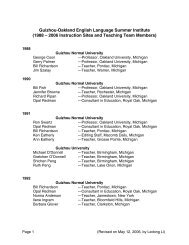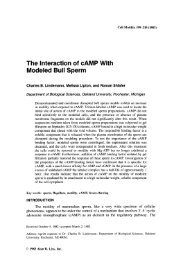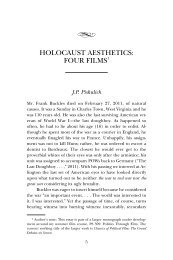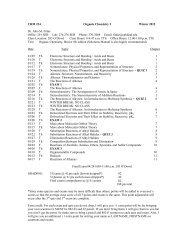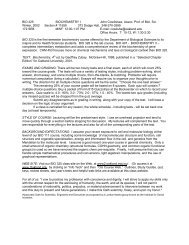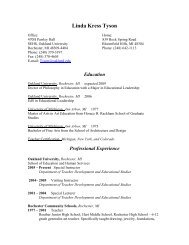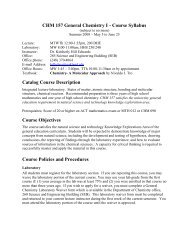Susan Wood, Saving a Haitian National Icon - Oakland University
Susan Wood, Saving a Haitian National Icon - Oakland University
Susan Wood, Saving a Haitian National Icon - Oakland University
Create successful ePaper yourself
Turn your PDF publications into a flip-book with our unique Google optimized e-Paper software.
phatically white, European depiction of God has drawn much<br />
harsh commentary from post-Colonial critics, most prominently<br />
Darcy Grimaldo Grigsby. Her important article about<br />
this painting examines how Lethière’s own relationship with<br />
his white father shaped his attitudes toward Black self-determination.<br />
9 According to Grigsby’s interpretation, Lethière had<br />
internalized the racist and colorist assumptions of his society<br />
that Black men cannot win freedom for themselves without the<br />
blessing of white, European patriarchs. Grigsby and Kadish<br />
both futher observe how the painting’s composition seems to<br />
privilege Pétion, who stands on the right hand of God (the<br />
viewer’s left) and whose face also appears more brightly illuminated<br />
than that of Dessalines. 10 Lethière probably felt closer<br />
kinship to a member of his own class, the free men of mixed<br />
race who formed the middle class of the Caribbean colonies,<br />
than with the former slave. He also shared Pétion’s Republican<br />
political sympathies rather than Dessalines’ choice of monarchy<br />
as the model for the government of the new nation.<br />
For the 21 st century viewer, the sight of the two men of<br />
color gazing worshipfully upward at a white God is both offensive<br />
and painfully embarrassing although a neoclassical artist<br />
trained in Europe could hardly be expected to visualize God in<br />
any other way. The notion of casting Morgan Freeman as God<br />
was still nearly two centuries in the future. 11 One could argue,<br />
of course, that Lethière did not need to represent God at all.<br />
He could simply have shown an aureole of light that suggested<br />
the presence of the divine, but instead he represented God as<br />
someone similar to his own white father. There is, however, another<br />
way to read and interpret this scene, one that gives<br />
Lethière more credit both for intentionally choosing his imagery<br />
and for manipulating it subversively. First, we must note<br />
that the inscription that identifies God is in Hebrew, not in<br />
Latin or French as one might expect from an artist trained in<br />
the academies of Europe. This, as Weston points out, is specifically<br />
the God of Moses who liberated the Jewish people from<br />
bondage in Egypt. 12 The presence of the Judeo-Christian God<br />
and of a stone stele that evokes the tablets of the Ten Com-<br />
39


